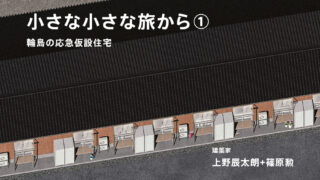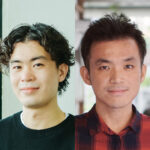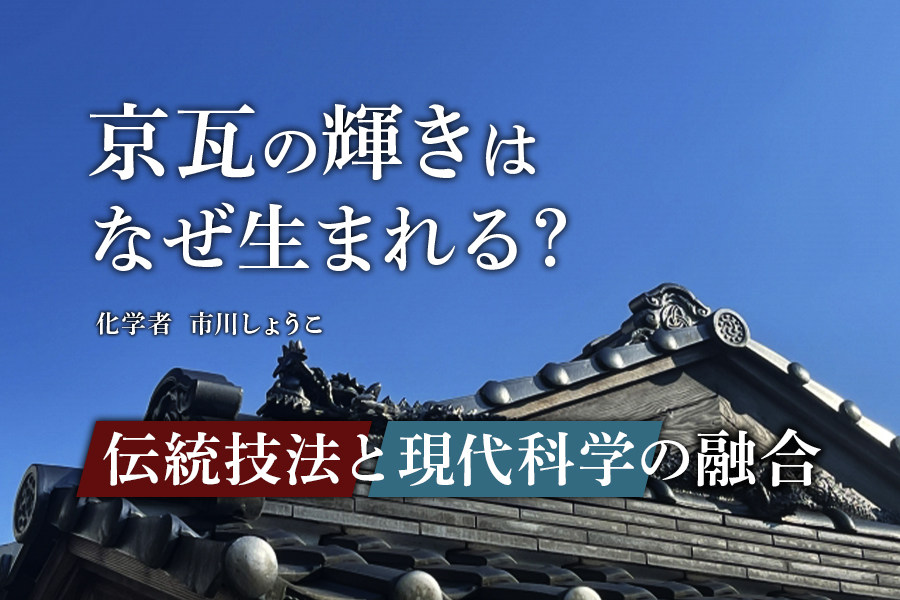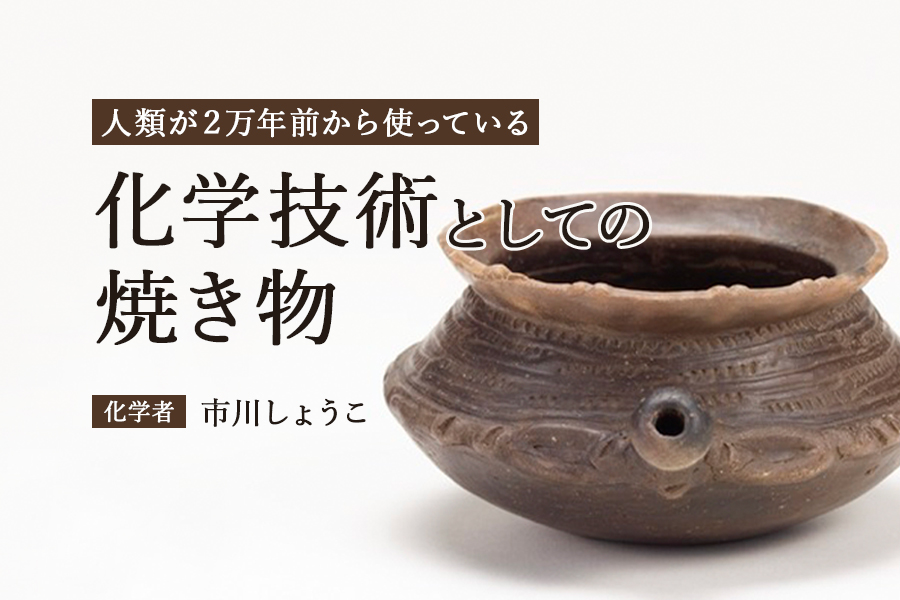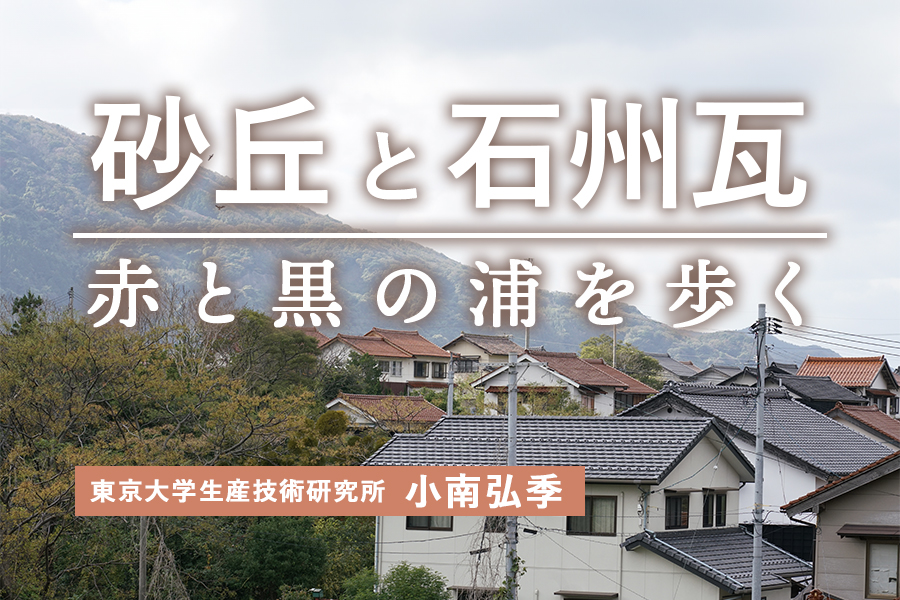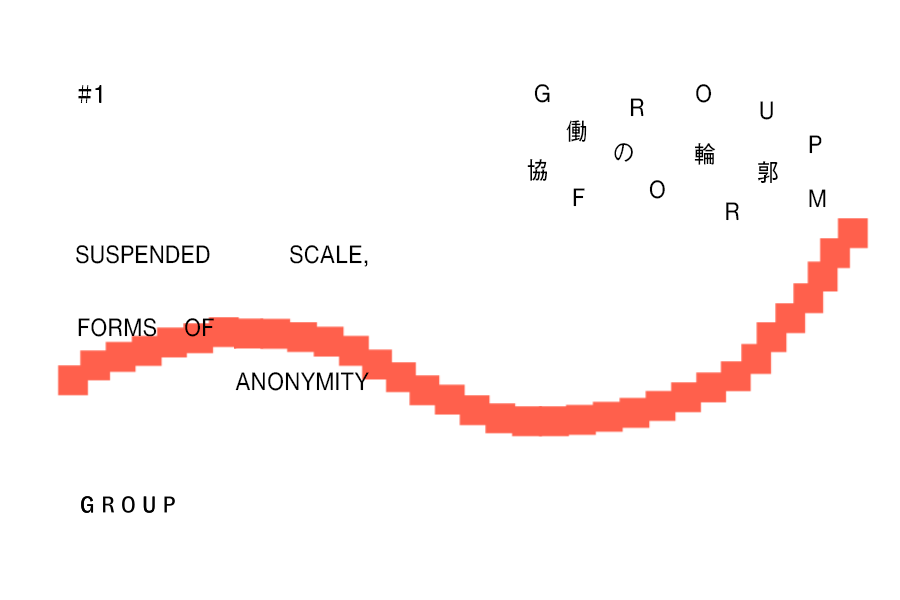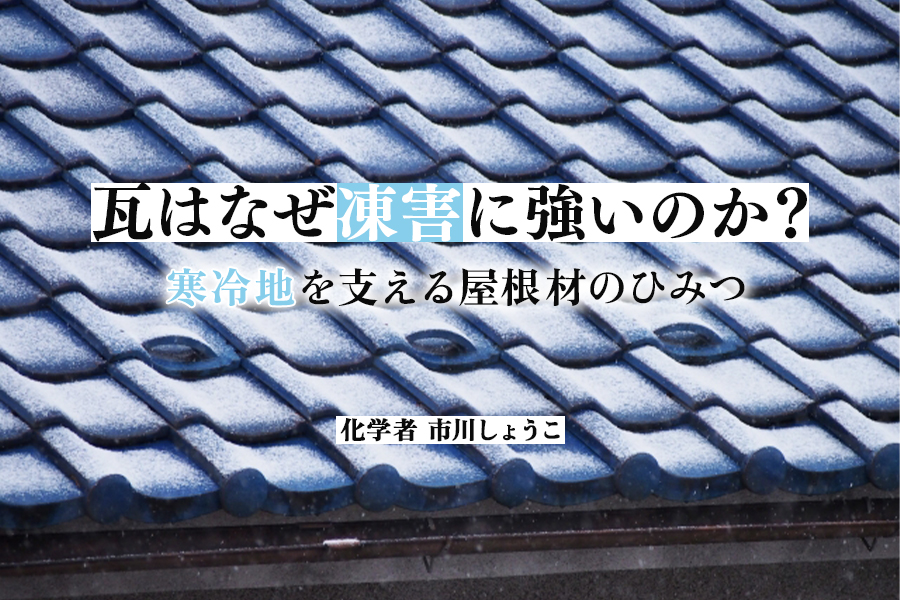小さな小さな旅から②「主計町の暗がり坂」Kuragai-zaka in Kazue-machi(上野辰太朗+篠原勲/建築家)
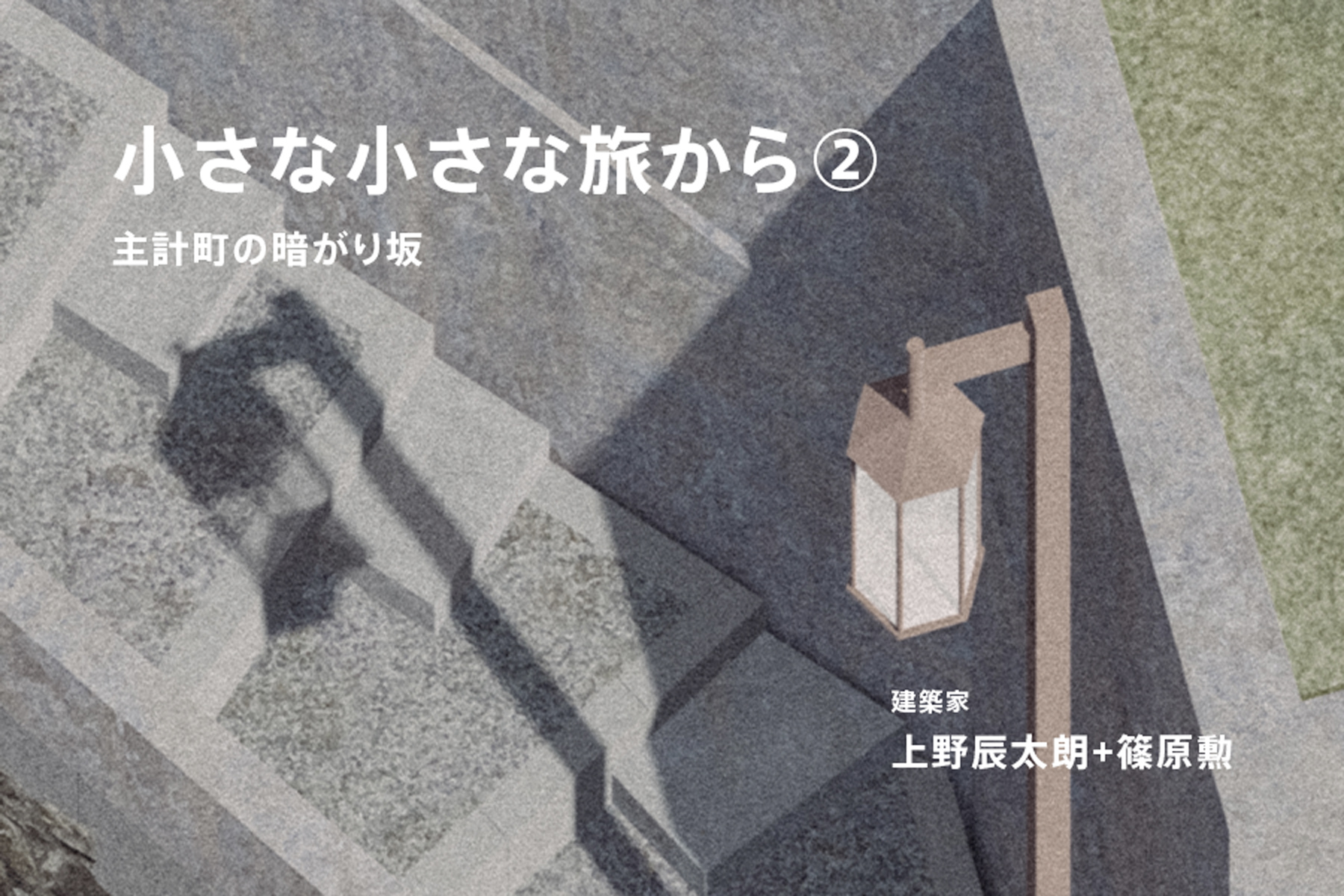
12月は数日間、能登半島を広く回りましたが、早朝と夕方くらいからは金沢の中心街を歩くことにしました。土地勘のない街をただ歩くのはとてもエキサイティングですが、雨続きとなった金沢の気温はとても寒く感じられ、なかなか日が射さない曇天続きに気が沈みがちの日々となりました。また、約5年ぶりに訪れた金沢は以前より圧倒的に海外からの訪日客にあふれていました。中心街の訪問客のゆうに半分以上を占めているのではないでしょうか。金沢の街も東京の銀座や表参道のように、明らかな外国人富裕層向けの商店が目立つようになりましたが、それでも金沢城公園や兼六園、金沢21世紀美術館のような開かれた場が金沢の街の中心にあるため、金沢の昔ながらの雰囲気は残っていると感じました。ところで、今回からは英語併記を試してみようと思います。旅をテーマにしている連載ということで、いろいろな国の方に読んでもらえる連載を目指したいと思います。
Last December, we traveled around the Noto Peninsula with Mr. Kubo for a few days and decided to explore the center of Kanazawa in the early morning and evening. Exploring an unfamiliar city was an engaging experience; however, the persistent rain in Kanazawa accentuated the cold beyond its actual temperature, while the overcast skies contributed to a subdued atmosphere. Additionally, compared to our last visit five years ago, Kanazawa was overwhelmingly more crowded with foreign visitors. We estimate they accounted for more than half of the tourists in the city center. Like Ginza and Omotesando in Tokyo, Kanazawa now has many shops clearly catering to wealthy foreign visitors. However, open spaces like Kanazawa Castle Park, Kenrokuen, and the 21st Century Museum of Contemporary Art preserve the city’s traditional atmosphere. Beginning with this edition, we have opted to incorporate both English and Japanese in our writing. Since this is a travel-themed series, we hope to reach readers from various countries.
金沢の寒さに面食らってしまった我々は、まず21世紀美術館内のジェームス・タレルの部屋に直行しました。実は、この(屋根のない)部屋には、床暖房の入った戸室石製のベンチが設えられています。多くの外国人観光客やバックパッカーが暖をとって休憩したり、スマホを見ているのが印象的です。座面と背部分の戸室石から伝わる暖かさに触れ、体の芯からぽかぽかになります。まるで雪国で露天風呂に入っているかのような幸せな気持ちになりました。この美術館の大きな特徴のひとつは「無料ゾーン」という、いくつかの常設の展示にも触れることができる仕掛けがあることです。無料ゾーンを歩くと、美術館の外周をほぼぐるっと回ることができます。昨今、他の多くの美術館も部分的に無料ゾーンを設けて、施設利用を気楽なものにしようとチャレンジしていますが、21世紀美術館の特徴は、建物の導入部分だけでなく、ほぼ建物全体を体験したような感覚が得られるところではないでしょうか。一望できる大きな解放されたロビーを持つというよりは、各展示室と外壁のガラスの間の不定形な場所が行き止まりなくずるずるつながる場となっています。したがって、この無料開放部分のどこにいても円形のガラス面に沿って街の方を向くことができ、とても気楽です。
Taken aback by the cold in Kanazawa, we headed straight to the James Turrell room in the 21st Century Museum of Contemporary Art. This roofless room has a heated floor made of Tomuro stone, providing a warm refuge. It was remarkable to observe numerous foreign tourists and backpackers seated, resting, and engaged with their smartphones. The warmth of the Tomuro stone, both underfoot and against our backs, warmed us from the core, making us feel as content as if we were soaking in an open-air bath in a snowy country. One of the museum’s great features is its “free zone,” which allows visitors to interact with some permanent exhibits. Walking through this area, you can circle almost the entire perimeter of the museum. Many museums now incorporate free zones to make their spaces more accessible, but what sets the 21st Century Museum of Contemporary Art apart is that visitors can experience almost the entire building, rather than just a small introductory section. Instead of featuring a large open lobby, the museum’s exhibition rooms are irregularly connected to its glass exterior. No matter where you are in the free zone, you can face the city through the circular glass surface, creating a uniquely comfortable experience.
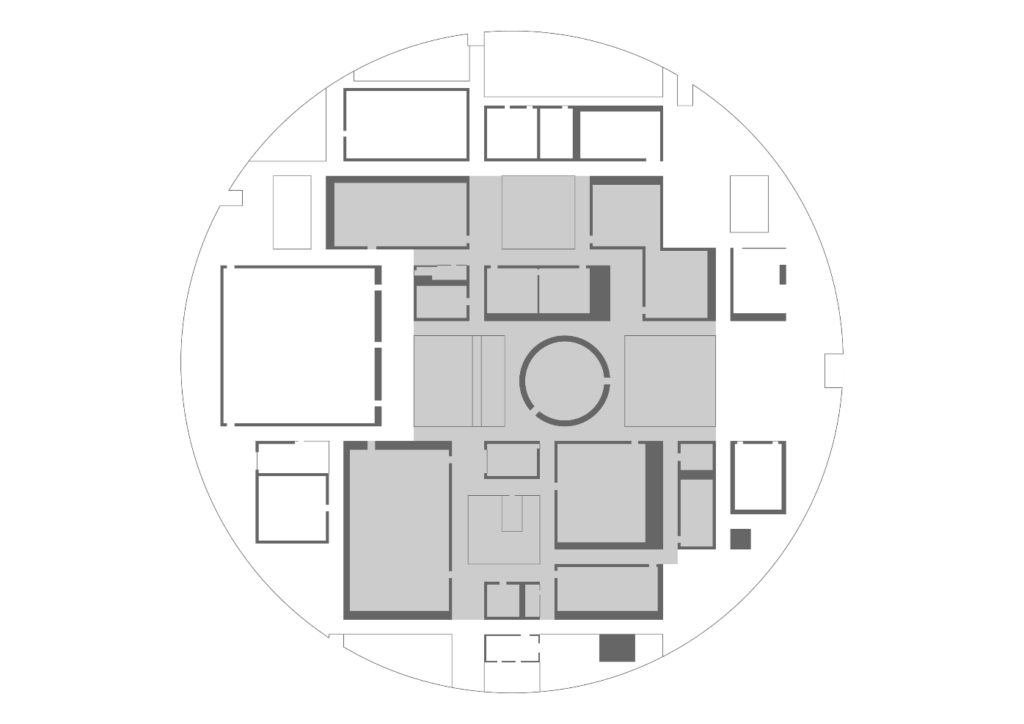
Figure 1. The complimentary area of the 21st Century Museum of Contemporary Art, Kanazawa (black areas are charged)
美術館で暖をとり、楽しみにしていた企画展示を見終えて落ち着いていると、改めて多くの観光客が無料ゾーンのあちこちで長時間くつろぐ姿を見かけました。観光マップを見てみると、美術館から徒歩10分程度の範囲に有名なスポットが多数見つけることができます。おそらく、土地勘のない観光客にとって21世紀美術館は、駅の待合室あるいは複雑に計画された旅のハブのような存在になっているのでしょう。旅に限らず、買い物や何かの鑑賞のために街に出ると数時間おきに休憩したいものです。普段生活している東京にも、地域ごとにこんなハブ空間があったら良さそうです。例えば銀座にはいくつもの県のアンテナショップがあります。各アンテナショップが一推しの商品やゆるキャラのアピールを競っていますが、例えばWi-Fiスポットを設えた休憩スペースとして開いたらどうかと、ふと思いました。そのWi-Fiスペースの中に地域のクールな紹介動画を流してはどうでしょうか。街の中のくつろぎの場の提供は、その街の居心地の良さに関係がありそうです。
As we warmed up inside and settled down after viewing the exhibition we had been anticipating, we noticed again how many tourists lingered in the free zone, relaxing. Looking at a tourist map, we realized that many famous spots were within a ten-minute walk from the museum. For travelers unfamiliar with the area, the 21st Century Museum of Contemporary Art seems to function like a waiting room at a train station or a hub for complexly planned trips. Whether traveling or engaging in daily activities, individuals often require a place to rest periodically while shopping or sightseeing. It would be great if Tokyo, where we live, had more such hub spaces. For example, Ginza has many prefectural antenna shops, each competing to showcase their region’s best products and mascot characters. But what if these shops also served as rest areas with Wi-Fi spots? Perhaps a cool introduction video about the region could play in these spaces. Providing places to relax in the city contributes to urban comfort.
Figure 2: Area map within a 20-minute walk centering on the 21st Century Museum of Contemporary Art, Kanazawa
別の日には、浅野川沿いに並ぶ茶屋街に足を運びました。ひがし茶屋街や、にし茶屋街に比べて、スケールが小さく高低差も激しい主計町茶屋街は、その小さなスケールゆえに建物と舗装、坂道とが渾然一体となった空間という印象です。ここももれなく外国人観光客のフォトスポットになっていて、様々な国の観光客同士が、お互いが写らないように配慮している様子は微笑ましく感じました。主計町にはいくつか目を惹かれる坂道が存在します。どの坂道にもぴったり建物が迫っていて、建物の間のすき間空間が街の印象を作っています。その小さいすき間空間は、高低差をつなぐための石畳の階段や石積みの素材の強さにより、より印象的なものになっていました。空間が小さいということと素材が強いという関係は、面白い関係だと常々感じます(第一回の瓦も仮設住宅の小さなスケールゆえの存在感でした)。さて、坂道のひとつ「暗がり坂」と名付けられた、まさに街のすき間のような空間は、不定形なすき間の全体形と、さらにいくつかの動線のために複雑になったかたち、踏面の形状と大きさ、壁をつくる様々な素材により、なんとも形容しがたい場所になっていました。
On another day, we visited the Chaya District. Compared to the Higashi and Nishi Chaya Districts, Kazuemachi Chaya District is smaller in scale and has more elevation changes. The combination of compact buildings, pavement, and slopes creates a cohesive space. This area is also a popular photo spot for foreign tourists, and it was heartwarming to see visitors from various countries being considerate of each other while taking pictures. Kazuemachi features several eye-catching slopes. Buildings are closely positioned along these slopes, and the gaps between them create a distinctive townscape. These small gaps are accentuated by stone-paved staircases that bridge the elevation differences, emphasizing the strength of the masonry materials. The relationship between small spaces and sturdy materials is always intriguing to us. One such slope, called “Kuragarizaka,” feels like a hidden gap within the city. Its amorphous shape, multiple intersecting pathways, varied tread sizes, and diverse wall materials make it a space difficult to describe.

Figure 3. Kuragari-zaka (3-15 Kazuemachi, Kanazawa City)
この暗がり坂の階段は、主計町の木造商店群を抜けたところにあり、一番幅の狭い700㎜幅の踏み石の上り口から、6段目辺りで最大2150㎜まで膨らみ、また狭まって久保市稲荷社を抜けて、鏡花通りという大通りに繋がります。6段目が踊り場になっていて、住宅の入口への動線になっているため二股に分かれ、踏み石の形状が複雑になっています。蹴上はおよそ250~300㎜、小さい踏み石は蹴上を半分程度、つまり130~150㎜程度にします。100㎜程度の段差は大人には座りづらいですが、130㎜くらいあるとしばらくの間座れる、使える寸法になります。これらの寸法や形状等が、この独特な場を作り出していました。日が沈み、主計町、暗がり坂はぐっと表情を変えます。街灯の絶妙な暗さによって更に情緒を増していました。誰かがギターを演奏すれば野外音楽堂に、また本を朗読し始めれば舞台に、お酒を持ち込めばビアホールに一瞬に早変わりしそうです。そう考えると、我々にとってのすき間は広場のことを意味するのかもしれません。暗がり坂も、先述の美術館の無料ゾーンも、緩やかな不定形のすき間空間ゆえに、いろんな方向を向いて佇める場でした。気楽にいろんな方向を向いていられる(逆に緊張感のある場も同様)、という感覚を我々は瞬時に把握できるのかもしれません。
This particular staircase appears after passing through the wooden shopfronts of Kazuemachi. It begins with a narrow 700mm stepping stone, expands to a maximum of 2150mm around the sixth step, then narrows again, leading past Kuboichi Inari Shrine to Kyoka-dori, a main street. The sixth step serves as a landing, splitting into two due to its function as an entrance path to a house, resulting in a complex stepping-stone arrangement. The steps range from approximately 250 to 300mm in rise, while the smaller steps are about half that, at 130–150mm. A 100mm step is difficult to sit on, but at 130mm, one can comfortably rest for a while. These dimensions and shapes define the unique character of the space. As the sun sets, Kazuemachi and Kuragarizaka transform dramatically. The soft glow of streetlights enhances the atmosphere. Should a musician perform, the space transforms into an open-air concert venue; a poetry recital renders it a stage, and the presence of beverages effortlessly converts it into a convivial beer garden. In that sense, for us, “gap” may signify a type of plaza. Both Kuragarizaka and the museum’s free zone allowed for multiple viewpoints and orientations, creating a fluid and adaptable experience. The ability to face various directions with ease is a quality that defines many inviting spaces, even those imbued with a sense of tension.
